International Heritage Centre Blog
Women’s History Month 2023: Salvation Army Women in Egypt.
Women’s History Month 2023 once again saw the International Heritage Centre and William Booth College Library team up to curate an exhibition highlighting the work of women Salvationists from the organisation’s history.
This year we travelled through the archives to 1930s Egypt to investigate the lives of Martha Paul and Rachel Anishka in the wider context of The Salvation Army’s presence in the region. This blog post draws upon the exhibition which was presented at William Booth College throughout March 2023.
Early years in Egypt

Today the Salvation Army works and worships in 133 countries. Its presence in Egypt over the years has been sporadic, often focusing on charitable endeavours bringing care to British troops and non-Egyptian inhabitants. Our most complete information regarding the beginning of recorded work in Egypt comes from the 1938 Year Book which informs us that the Egyptian Mail marked the arrival of Salvation Army Officers in Egypt with a quotation from Evangeline Booth:
‘They’ refers to Adjutants Victor and Laura Underhill. Originally from Canada, the Underhills arrived at Port Said from London in 1936 to put down roots. They began working from a hostel where they held meetings for the ‘curious’ and distributed copies of The War Cry.

In a published piece in the US War Cry, 9 August 1936, Laura Underhill reports ‘Ours is a lonely post’, giving a sense of their uphill battle to recruit members and establish a firm presence. Another article written by Laura, 22 May 1937, also reports that at the time of their arrival, Port Said was home to just one Salvation Army soldier, another Salvation Army woman: Sister Mrs Ussher; about whom we have no further information beyond this early association with the Underhills at Port Said.
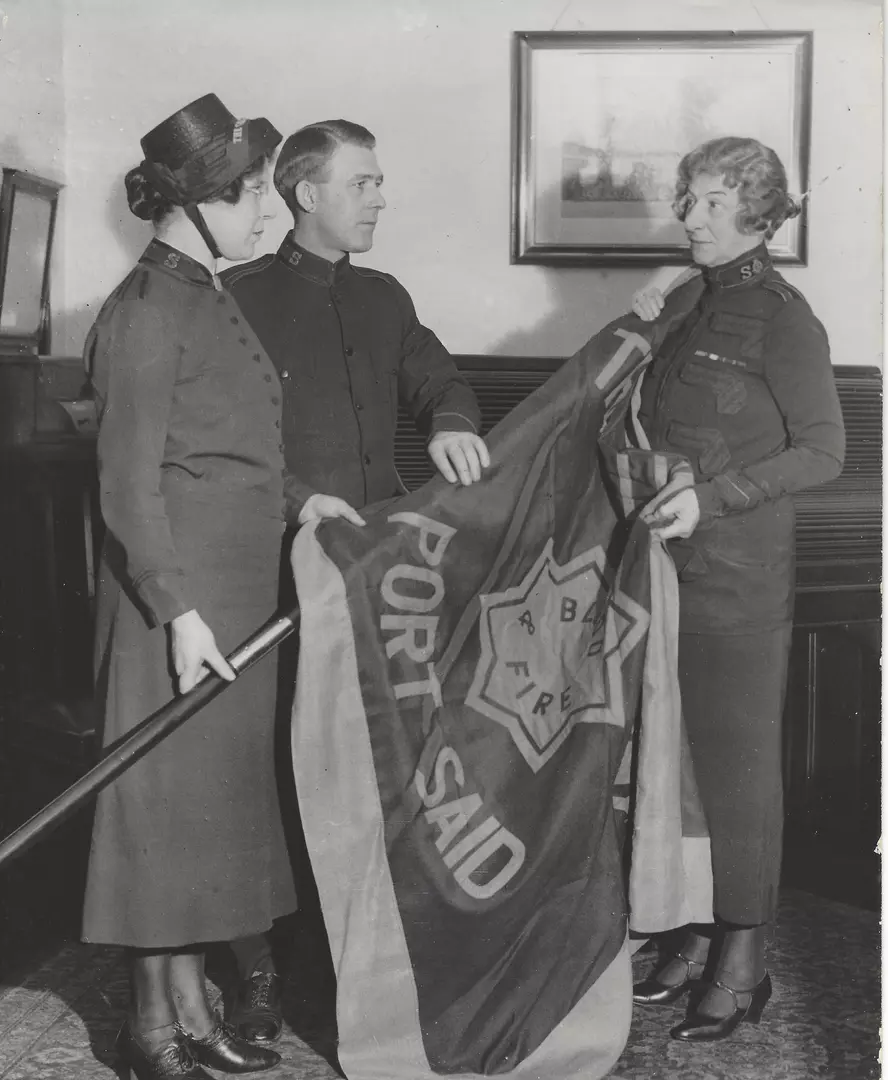
Rachel Aniska and Martha Paul
Rachel Anishka was born on 14 June 1914 in Russia.
In 1900 Tsarist Russia had severely restricted all expressions of Christianity in favour of the Russian Orthodox Church and by 1918 when Rachel was four years old and Russia was embroiled in Civil War, her Christian family fled Russia for Palestine to escape religious persecution. In November 1936, at age 18 Rachel encountered The Salvation Army in Jerusalem. A 1938 article reports that Rachel was living next door to a Salvationist who had been converted by The Salvation Army in Belgium – could this be Sister Mrs Ussher? In July 1938 she was enrolled by Adjutants Victor and Laura Underhill as a Soldier in Port Said and returned to Jerusalem where it is reported that she remained the ‘only Salvationist in Jerusalem between the two world wars’.
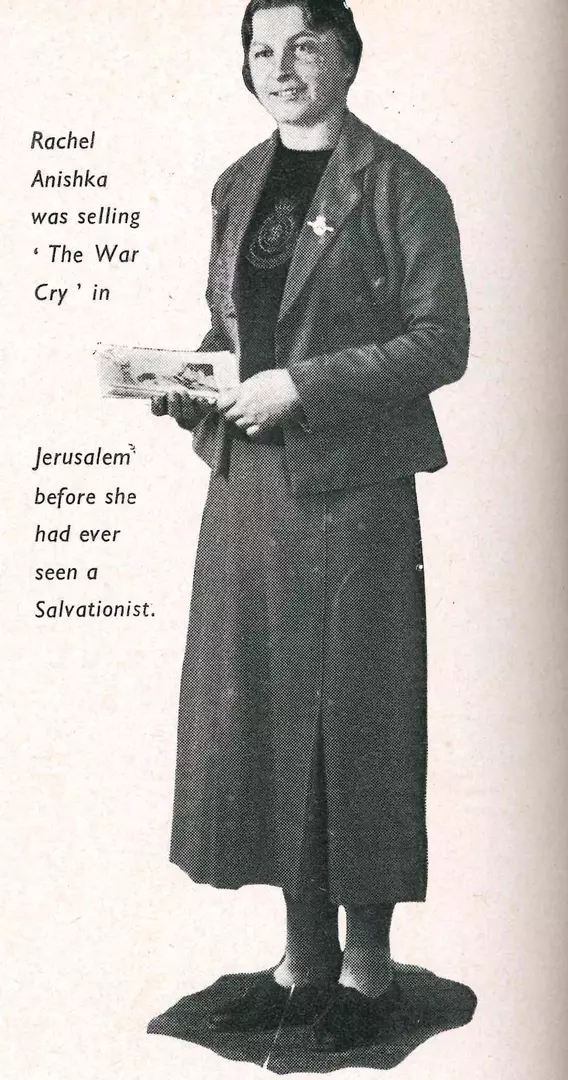
As the Second World War approached, another woman joined The Salvation Army’s ranks in Egypt. While Rachel joined The Salvation Army in Port Said as a Russian refugee, Martha Paul became the first Egyptian woman to enrol in The Salvation Army, in August 1938.
The International Heritage Centre holds one photograph of Martha, showing her selling The War Cry in Salvation Army uniform after being sworn in as a Soldier. Martha Paul’s role as a child’s nurse for a Scottish family based in Cairo is recorded in The War Cry (Canada) 10 December 1938. The report also states that Martha had ambitions to travel to the UK in 1939. Sadly this is where our knowledge of her life and relationship with The Salvation Army ends.
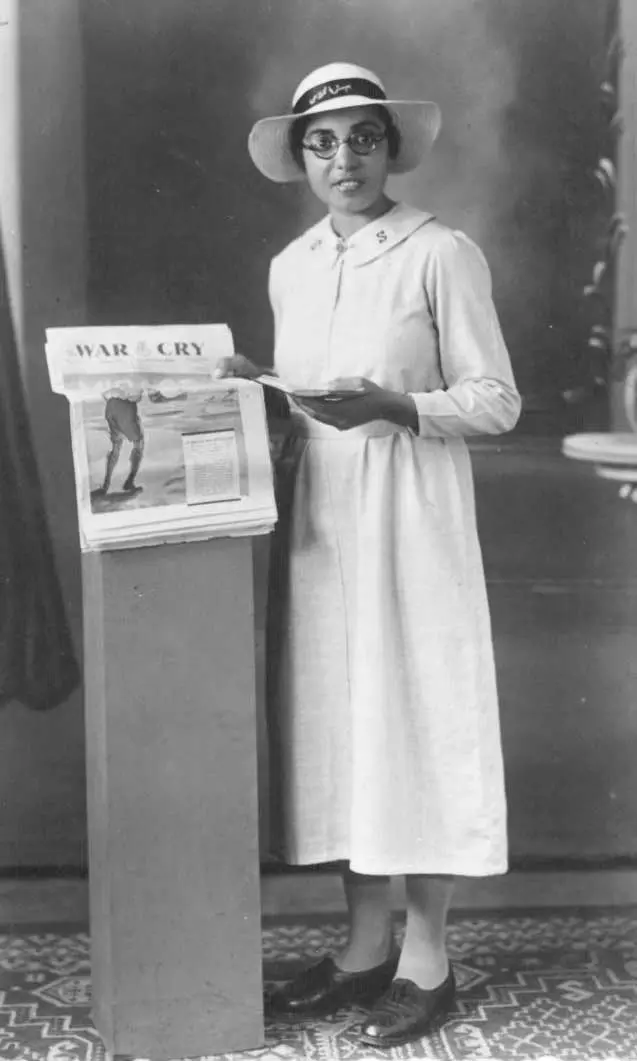
Meanwhile, with officership calling, Rachel Anishka travelled to England on the Orford ship, docking in Southampton in October 1938. It was from an article in The War Cry (Canada) 22 June 1940, that we discovered that Rachel Anishka’s transport costs were paid for by Salvationists, officer and non-officer, as well as a Christian from outside The Salvation Army. All connections made via Adjutant Laura Underhill.
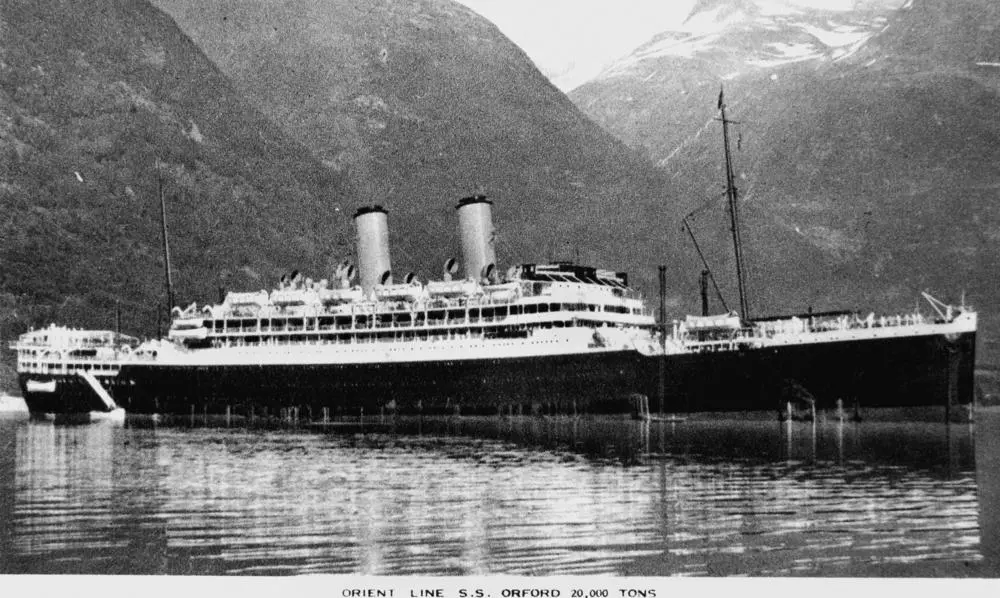
Rachel’s cadet application and service record, held by The Salvation Army International Heritage Centre, tell us that between November 1938 and March 1939 Rachel worked in a Salvation Army Slum Post before being accepted for training at William Booth College in the 1939 Holdfast session. Anishka’s career card also notes extensive multilingual proficiency with fluency in Russian, Spanish, Hebrew Arabic, German, and English!
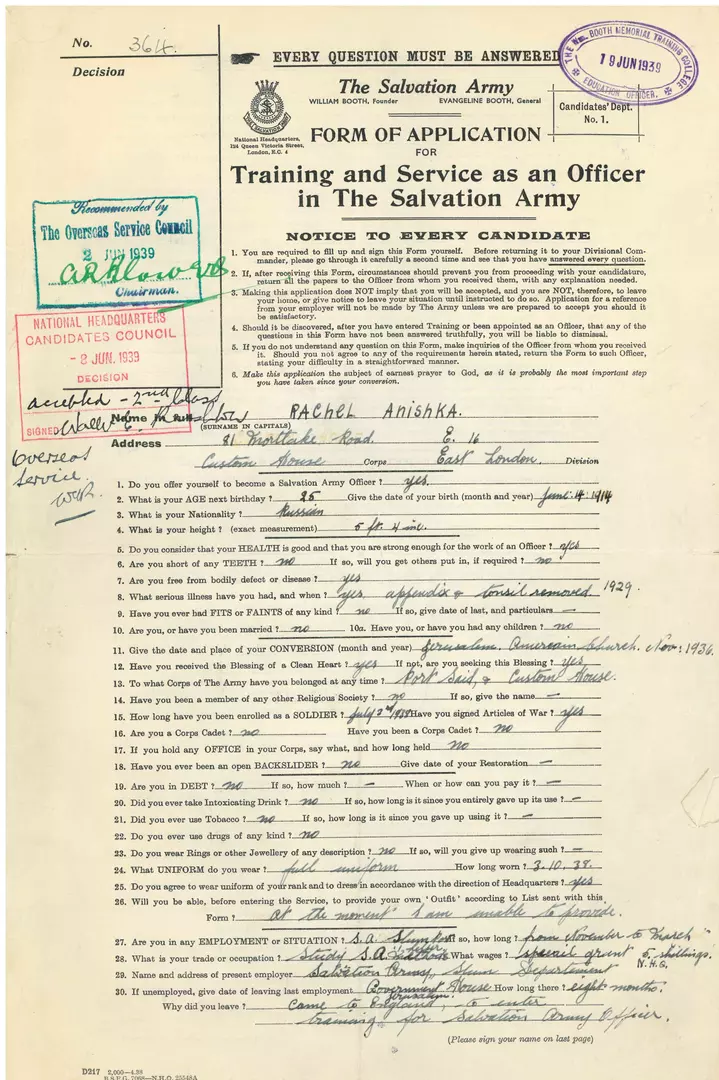
Later that same year, Rachel’s commissioning as Probationary Lieutenant led her to five years’ service in the UK, starting with a Women’s Social Work appointment in Birmingham followed by further positions in the British Field. Reference in The War Cry, 22 June 1940 (Canada) is made to her working with Lieut-Col. Mary Patch (retired), herself discussed in Hugh Redwood’s God in the Slums.
Rachel’s career card takes us to October 1945 when she married a Catholic man referred to as ‘Mr Luke’. While our records end here, Ancestry® takes us a step beyond. Government records show that Rachel Anishka (also known as Raia Anishka) married Mr Luke Keefe on 3 October 1945 at a church on Charlotte Street, Bath, at which time a permanent address in Lancashire was recorded. In June 1970 she crops up again for subsequent marriage to a Mr Farley in Bury St Edmunds.
The Red Shield in Egypt
Despite the initial work of The Salvation Army running from 1936-1940, work resumed during World War II. This time under the auspices of the Red Shield. These images of Olive Cooksley’s identification card indicates that Cooksley was both a Salvationist and a member of the British Forces, working in the Middle East. The card granted Cooksley immunity from the Egyptian criminal system for any activity carried out in line with official duty.
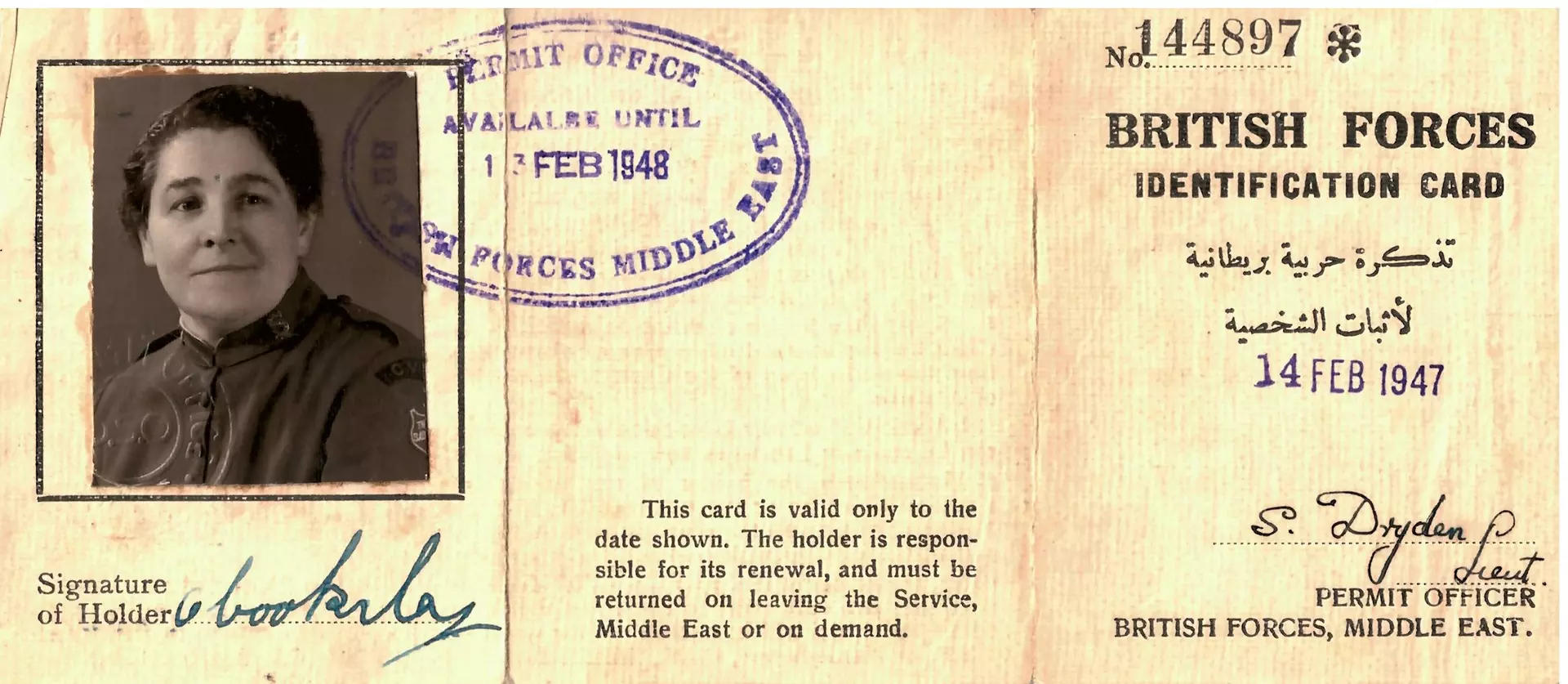
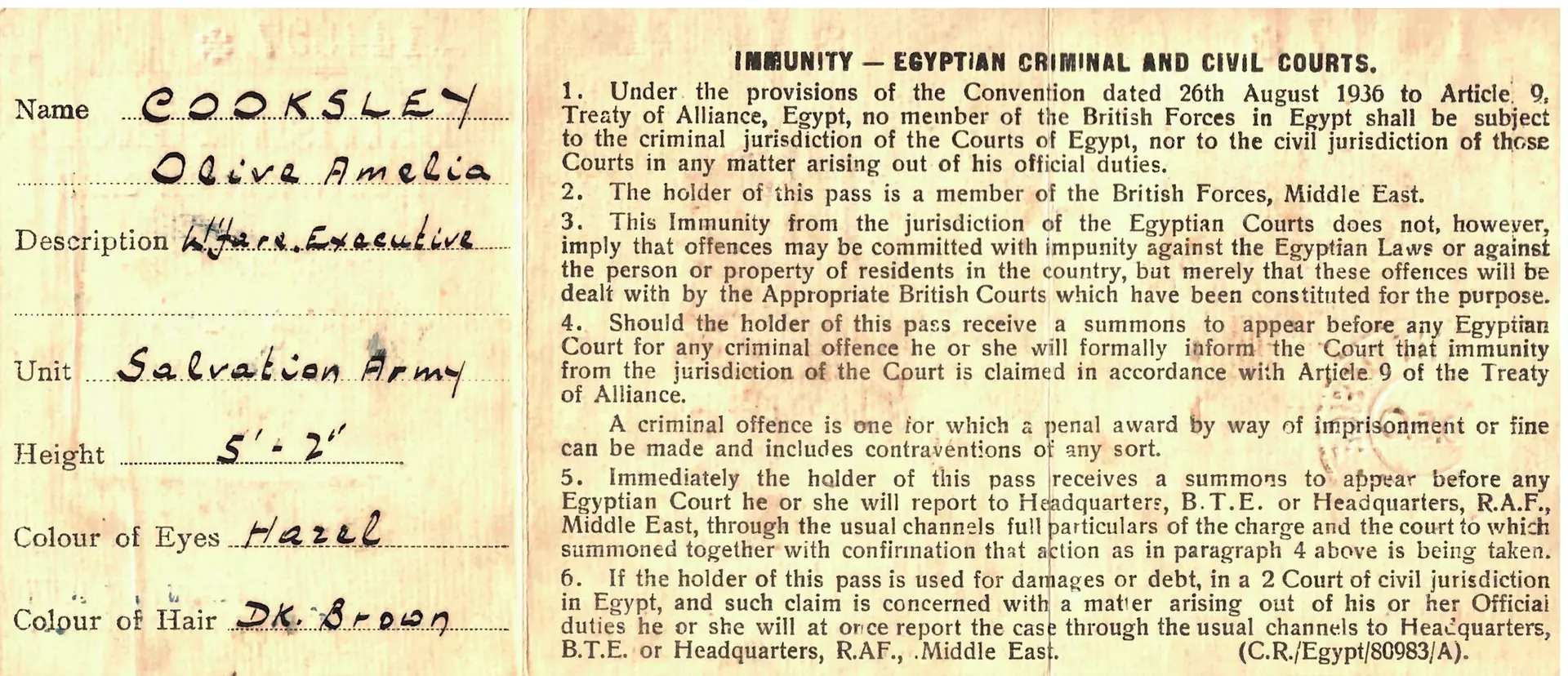
Olive Cooksley worked alongside Major Frank Evans, Adj. Marshall Greenhow and Mrs. Adj. Greenhow in Hostel Cairo. Together they offered meals, companionship, guidance, and social activities to military personnel.
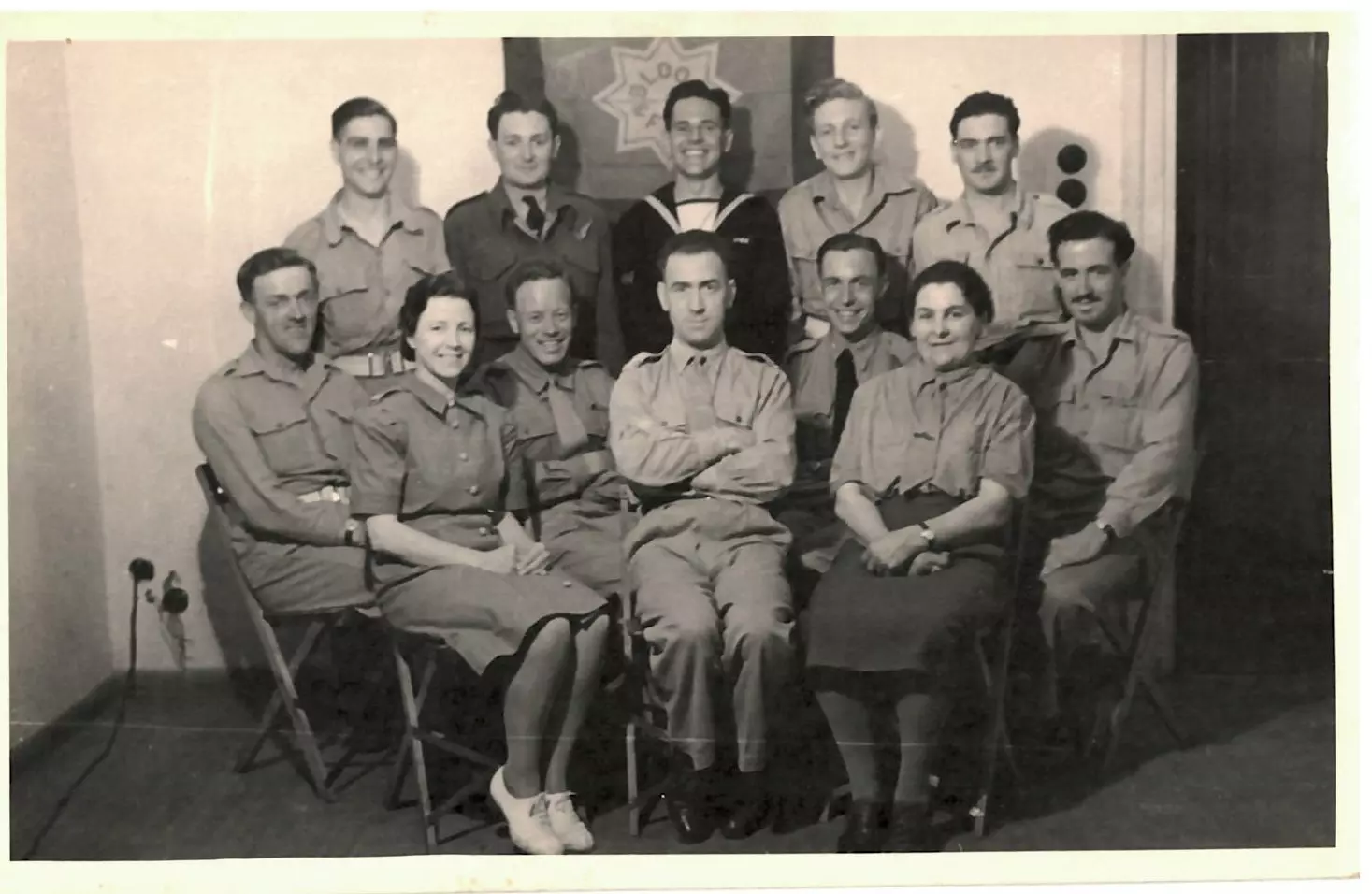
Chloe
April 2023
Read other blog posts relating to Salvation Army Women
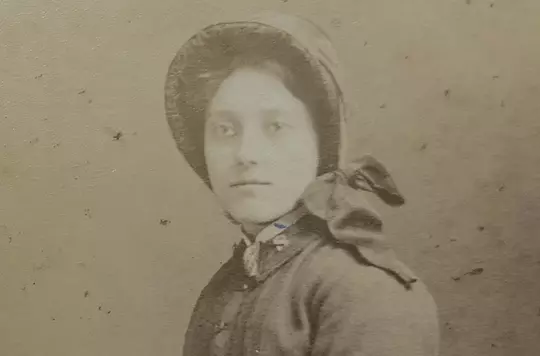
Marie Booth: the forgotten Booth daughter
Birkbeck intern Laura did some digging in the archives to find out more about William and Catherine’s sixth child.
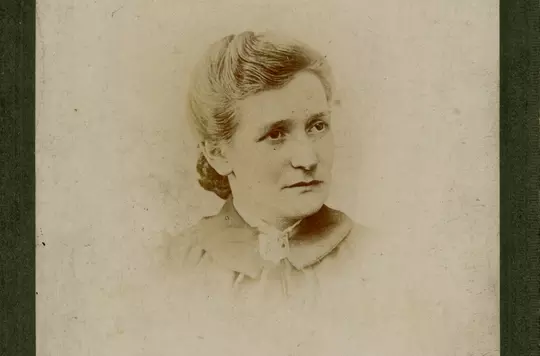
Guest blog: Honor Salthouse, 'The Oldest Soldier in the World'
Winette Field, Librarian of William Booth College, returns for another guest blog relaying the findings of a collaborative research project into the life of The Salvation Army's 'oldest soldier', Honor Salthouse.
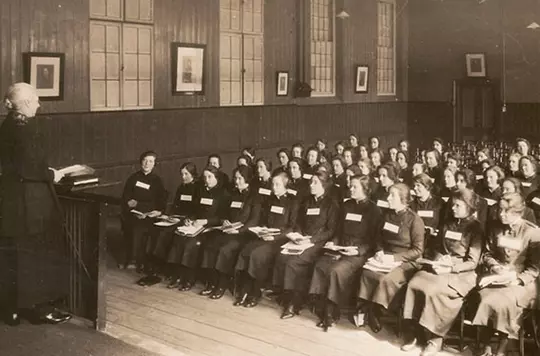
Women's History Month 2021 roundup
This blog post brings together the resources that we have shared via social media, throughout Women's History Month 2021.
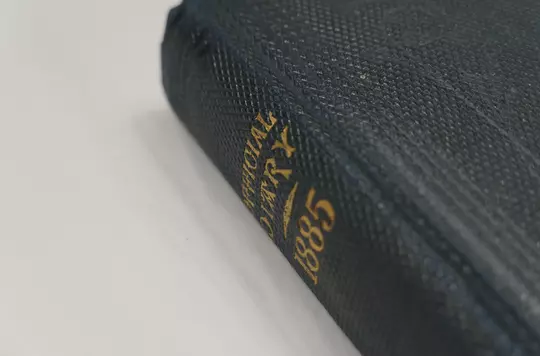
A Year in the Life of Florence Booth
This month we explore Florence Booth's 1885 diary, revealing first hand experiences of The Salvation Army's Women's Social Work programme and the infamous 'Maiden Tribute' trial, as well as marriage and motherhood in Victorian Britain.